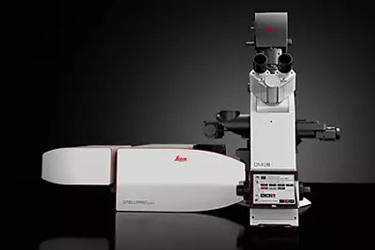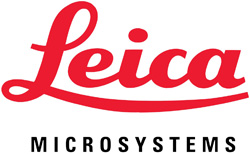Fast Imaging Beyond The Diffraction Limit With STELLARIS STED Microscopes

STELLARIS STED Microscope
Get faster to the truth
Our STED (stimulated emission depletion) technology joins the STELLARIS platform to provide you the fastest way of imaging beyond the diffraction limit. Obtain cutting-edge nanoscopy results in no time with astounding image quality and resolution, while protecting your sample. STED super-resolution allows you to study multiple dynamic events simultaneously, so you can investigate molecular relationships and mechanisms within the cellular context.
The seamless integration of STED and STELLARIS provides easy access to STED directly from the confocal interface, making it just a few clicks away. Now you can get more insights from your sample, because every detail matters.

STELLARIS STED Microscopes: Super-resolution re-imagined
STED and STELLARIS in a single instrument offer you the benefits of its brilliant confocal capabilities and access to insightful super-resolution.
POWER
Study multiple events simultaneously and molecular interactions at the nanoscale and across the entire spectrum, thanks to the unique combination of our next generation WLL, optimized beam path, fast Power HyD detectors, and up to 3 STED laser lines.
POTENTIAL
Take STED super-resolution imaging to the next level with TauSTED, our new approach to STED based on fluorescence lifetime that delivers cutting-edge image quality and gentle live-cell conditions.
PRODUCTIVITY
Acquire astounding confocal and STED images easily and set up your experiment in a few clicks thanks to the new ImageCompass user interface.
STELLARIS STED
- All-in-one STED, for 2D and 3D nanoscopy with up to 3 STED lines
- WLL with excitation from 485 nm up to 685 nm
- Power HyD S and HyD X available
- TauSTED powered by TauSense
The power to see more and resolve molecular relationships in your specimens
To characterize the mechanisms behind processes, such as cell transport, differentiation, and cell division, you need to have the best possible image quality, flexibility to design your experiment, and speed to observe specific biomolecules in their native environment.
Thanks to the combination with the STELLARIS platform, STED benefits from our next generation White Light Laser (WLL) / AOBS technology, a newly optimized beam path, spectral detection with the Power HyD detector family, and multiple STED lines (592, 660, 775 nm). STED delivers bright images to characterize structures with nanoscale detail, enables colocalization studies with the highest flexibility for fluorophore selection, and allows you to follow highly dynamic processes.
Extend the number of simultaneous events you can study at the nanoscale
Multicolor fluorescence labeling has the power to reveal relationships among intracellular species, because you can image different components with molecular specificity.
STED and STELLARIS excel at multicolor applications. You can use the best dyes in the red region of the spectrum, go for fluorescent proteins in the green, or exploit novel fluorogenic probes in the orange. You can perform colocalization studies of multiple species and resolve them with subdiffraction detail.
Our spectral detection offers you up to 5 STED-capable Power HyD detectors, so you can extend the number of molecular players to be localized in time and space. Additionally, the digital capabilities and speed of the Power HyD detectors, with 1.5 ns full-system dead time, guarantee that you get excellent image quality in terms of signal-to-noise and background, while delivering at least 10x more photon collection/pixel dwell time compared to APDs.
2D and 3D STED imaging with outstanding brightness and resolution
With STELLARIS STED microscopes, you can obtain the results you need in both 2D and 3D as resolution becomes tunable in x, y and z. In order to ensure you obtain the best brightness and resolution in 2D and 3D, we provide you with the best optics for assuring optimal overlay of the excitation and STED PSF all over the spectrum and that quantification capabilities are not lost due to adaptive corrections. Our STED WHITE Class of objective lenses have been especially developed to guarantee optimal conditions for a variety of STED experiments:
- The STED WHITE 100x oil lens delivers the highest resolution and offers excellent performance for daily imaging of fixed samples
- The STED WHITE 93x Glycerol lens provides adaptive correction for temperature fluctuations, refraction index mismatch, and inhomogeneities when looking deep in the sample, thanks to the motCORR fully motorized correction collar technology
- The STED WHITE 86x Water lens with motCORR also provides adaptive correction, as explained above, and is ideal for gentle live cell applications and STED-FCS (1).
(1) “High photon count rates improve the quality of super-resolution fluorescence fluctuation spectroscopy” F. Schneider et al. J. Phys. D: Appl. Phys. 53 164003, 2020.
TauSTED: Nanoscopy meets Lifetime
Expand the potential of your STED experiments thanks to the outstanding resolution, image quality, and sample protection provided by our proprietary TauSTED technology.
TauSTED distinguishes photons coming from the STED process from those of the background, using the fluorescence lifetime gradient induced by the presence of STED. As a result, you can perform imaging with a resolution beyond conventional STED* at a significantly lower light dose, enabling long time-lapse live-cell nanoscopy.
You can apply TauSTED for all your STED experiments, in particular for multicolor colocalization studies. With FALCON, you can even separate spectrally overlapping STED dyes.
*Resolution <30 nm (lateral) and <100 nm (axial), depending on sample and fluorophore.
TauSTED delivers outstanding resolution at dramatically lower light doses
When you look for low illumination strategies for your STED experiment, there is a key question: How low is low? The answer is far from trivial, because it depends on your sample and fluorophore of choice.
We will not promise arbitrary light dose reductions that are not related to your experiment. Instead, we can show you that TauSTED significantly reduces the excitation and STED light dose so you can carry out your measurements successfully over time and space. With TauSTED, you eliminate background and reach the best resolution, avoiding higher compensation dosage and loss of quantification capabilities.
This advantage is possible thanks to the unique combination of STED with our STELLARIS platform capabilities: the ultra-fast Power HyD detectors and access to the lifetime dimension as provided by TauSense (STELLARIS STED and STELLARIS 8 STED) and FLIM (STELLARIS 8 FALCON).
Pushing resolution beyond conventional limits
TauSTED measures the fluorescence lifetime-based information acquired in every STED experiment and maps the STED response of the fluorophore in real time. Access to this information allows you to increase image quality (signal-to-noise), eliminate photons from the background using physical principles, and push the resolution beyond the limits of intensity-based STED, no matter which excitation and STED line (592, 660, 775) you are using.
TauSTED does all this in an automated way, so you can focus on your sample and see details that you would miss otherwise.
Gentle STED super-resolution for extended live-cell imaging
The lower excitation and STED light dose translate into protection for the specimen.
This capability empowers longer time-lapse experiments, i.e., more frames, or larger volume imaging without sacrificing spatial resolution.
Separate species with overlapping spectra using STED-FLIM
When combining STED and FALCON modalities on STELLARIS 8, it is possible to perform multicolor super-resolution with the best STED fluorophores (far-red emitting), as you can separate species using their fluorescence lifetime.
The emission spectra of these fluorophores strongly overlap and cannot be distinguished using traditional intensity acquisition. Combining STED-FLIM with our automated Phasor Separation, the fluorophores are clearly separated using their distinct lifetimes and a single detector.
Increase your productivity with an easy to set up STED
STELLARIS provides straightforward access to STED for both beginners and experts. Now you can design your experiments combining confocal and multicolor, as well as 2D and 3D STED, with just a few clicks.
- Get results you can trust thanks to the smart guidance of ImageCompass which focuses on your sample characteristics.
- Ensure the highest STED performance with one-click beam auto-alignment, protecting your sample from light irradiation and achieving the optimal positioning of the laser foci in a fully automated way.
- Image large areas in no time with LAS X Navigator and select your regions of interest for STED imaging.
- Validate your results thanks to STELLARIS capabilities, like access to raw data and fast and efficient photon counting.
Validate your results fast and on a single platform
The combination of STED and STELLARIS means you can validate your findings, as STED, confocal, LIGHTNING, and TauSense data are all available in the same system.
The combination also means you can access your raw data for quantification. TauSTED allows background subtraction and tuning of the resolution from the physical readout of the fluorescence lifetime information.
With STELLARIS, you are always in control of your nanoscopy experiment.
